 Gentle reader, when I watched the 1993 anime film Ninja Scroll (and Ghost in the Shell), I said:
Gentle reader, when I watched the 1993 anime film Ninja Scroll (and Ghost in the Shell), I said:
I would have enjoyed these films more as actual films with actors and stuff, maybe, but I’m too old to be watching a lot of cartoons.
And, in an amazing coincidence or bit of cosmic kismet, I proved that to be true within the week.
I grabbed this film thinking that it was going to be a sort of B-movie Western. I knew it starred Tom Laughlin, who played in the Billy Jack films so I expected it would have some political messaging.
The prologue voice over (provided by Burgess Meredith) tells of how the man was educated in Europe and the East, which explains why he was so skilled with a gun (a special 12-shooter) as well as the katana. But he, the Master Gunfighter, is leaving the hacienda of his father-in-law after the father-in-law’s men killed the native residents of a coastal village to cover for their illicit recovery of gold from a shipwreck. The Master Gunfighter, Finley, did not participate in the killing except to save himself when a villager attacked him, but he carries that guilt and cannot stay at the hacienda. Wait a minute, that’s the story from Ninja Scroll adapted to 19th century California instead of Tokagawa Japan.
Finley is working as a sideshow in Mexico when a group of gunfighters comes to find him and kill him because the leader of the hacienda is planning a similar slaughter to steal some gold to keep his hacienda running and wants to have Finley out of the way first. So Finley makes his way back to the hacienda to reunite with his wife, played by Barbara Carrera, and to dissuade his in-laws from pursuing their plans, meeting a mountebank, the only survivor of the first village slaughter, and a government spy along the way (the government spy, of course, tracks with Ninja Scroll as well). Gunfighting and swordfighting ensue.
After watching the film, I went to see if they shared a common source. And although Ninja Scroll‘s Wikipedia page does not mention it, The Master Gunfighter‘s Wikipedia says it’s a remake of a 1969 Japanese live-action film called Goyokin. Strangely, nobody on the Internet seems to have said that Ninja Scroll is also based on this film as well–I’ve found an article about anime that mentions both, but the listicle includes another anime whose soundtrack mirrors Goyokin‘s. So looky there, gentle reader: some original thought/connection/research here on MfBJN. That’s the insight you’re paying big bucks for. Born of a coincidence that still tickles me several days later.
At any rate, a little preachy, as you might expect from Billy Jack. It’s multi-layered though, and not as simplistic as you would get these days. The Americans are pressing the Spanish-ancestored landed gentry in California, who are then slaughtering natives for profit, and the natives abhor the Catholic missionaries.
I remember that my mother watched the Billy Jack movies when they came on. She might have had a little thing for Tom Laughlin, who was a native of Milwaukee and studied at the same university that I did, and I remember he ran for president in 1992.
But if the Internet had been around in 1975, well, public Internet, maybe we would have had Eula versus Chorika debates.
Continue reading “Movie Report: The Master Gunfighter (1975)”



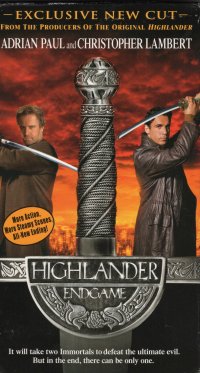 You know, gentle reader, this might have been the first time I’ve seen this film. I mean, I have within recent memory gone through my videocassette collection of Highlander movies, and then I bought them again on videocassette to make sure I had them all (and have seen
You know, gentle reader, this might have been the first time I’ve seen this film. I mean, I have within recent memory gone through my videocassette collection of Highlander movies, and then I bought them again on videocassette to make sure I had them all (and have seen 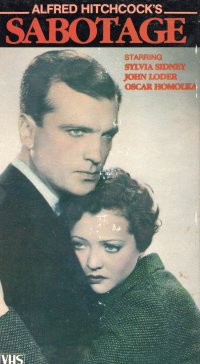 Oh, but no, gentle reader. Next, after
Oh, but no, gentle reader. Next, after  After my recent spate of cartoons and cartoonish films (interspersed with a romantic comedy), I decided to watch a serious piece of film.
After my recent spate of cartoons and cartoonish films (interspersed with a romantic comedy), I decided to watch a serious piece of film.
 Well, I watched it.
Well, I watched it.
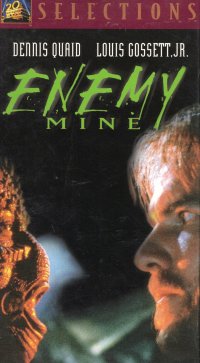 I saw this film over and over again when it was on Showtime and we lived in the trailer. Many times, I’ve said that a small set of films played on those long summer days when we were not supposed to leave the trailer when my mother was at work (and we obeyed infrequently). Not only were we limited to a 12′ by 60′ metal box–a very small mobile home even then–but the nature of premium movie channels in the 1980s gave us plenty of opportunity to watch the same film numerous times in a short time frame. You might not remember, gentle reader, but premium movie channels in those days would get a couple of new movies every month and would play the hell out of them that month, running them two or three times a day interspersed with some of the older movies–that is, the movies that had debuted a couple months previously, which were still getting a lot of play, available several times a week to view. It’s hard to imagine it in the 21st century, where the premium movie channels offer a couple of movies and a pile of original series, so their playlists, if you will, are far greater than what they were then. So my brother and I watched Enemy Mine a couple of times in the span of a couple of months, and I’m not sure that I have seen it since. But when I asked my brother about it before watching it, he said he’d watched it a couple of months ago.
I saw this film over and over again when it was on Showtime and we lived in the trailer. Many times, I’ve said that a small set of films played on those long summer days when we were not supposed to leave the trailer when my mother was at work (and we obeyed infrequently). Not only were we limited to a 12′ by 60′ metal box–a very small mobile home even then–but the nature of premium movie channels in the 1980s gave us plenty of opportunity to watch the same film numerous times in a short time frame. You might not remember, gentle reader, but premium movie channels in those days would get a couple of new movies every month and would play the hell out of them that month, running them two or three times a day interspersed with some of the older movies–that is, the movies that had debuted a couple months previously, which were still getting a lot of play, available several times a week to view. It’s hard to imagine it in the 21st century, where the premium movie channels offer a couple of movies and a pile of original series, so their playlists, if you will, are far greater than what they were then. So my brother and I watched Enemy Mine a couple of times in the span of a couple of months, and I’m not sure that I have seen it since. But when I asked my brother about it before watching it, he said he’d watched it a couple of months ago.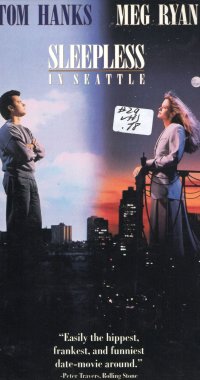 You know, it was easy for me to think this was the first of the Tom Hanks/Meg Ryan movies, but actually, Joe Vs. The Volcano was first in 1990. I don’t think I’ve seen that one all the way through, but I have seen this one and You’ve Got Mail (1998) before. I might have seen the latter in the theater, of all things, as I was dating a girl whose first introduction to me announced by the America Online “You’ve got mail!” voice. As it happens, that girl, now my beautiful wife, joined me in watching this film, surprised that I was watching a romantic comedy instead of some old movie or foreign film of dubious merit.
You know, it was easy for me to think this was the first of the Tom Hanks/Meg Ryan movies, but actually, Joe Vs. The Volcano was first in 1990. I don’t think I’ve seen that one all the way through, but I have seen this one and You’ve Got Mail (1998) before. I might have seen the latter in the theater, of all things, as I was dating a girl whose first introduction to me announced by the America Online “You’ve got mail!” voice. As it happens, that girl, now my beautiful wife, joined me in watching this film, surprised that I was watching a romantic comedy instead of some old movie or foreign film of dubious merit. When I popped in this videocassette, I thought it would be a short, maybe 30- or 60-minute cartoon, perhaps like an episode of Robotech, one of which I actually watched with my boys sometime after reading
When I popped in this videocassette, I thought it would be a short, maybe 30- or 60-minute cartoon, perhaps like an episode of Robotech, one of which I actually watched with my boys sometime after reading After watching Ninja Scroll, I (re-) discovered this film in the library, and I figured I might as well watch it right away whilst my brief interest in anime was at its peak.
After watching Ninja Scroll, I (re-) discovered this film in the library, and I figured I might as well watch it right away whilst my brief interest in anime was at its peak. Not to be confused with Bob Greene’s
Not to be confused with Bob Greene’s 
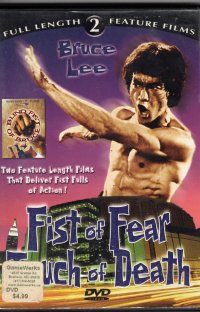 After watching
After watching 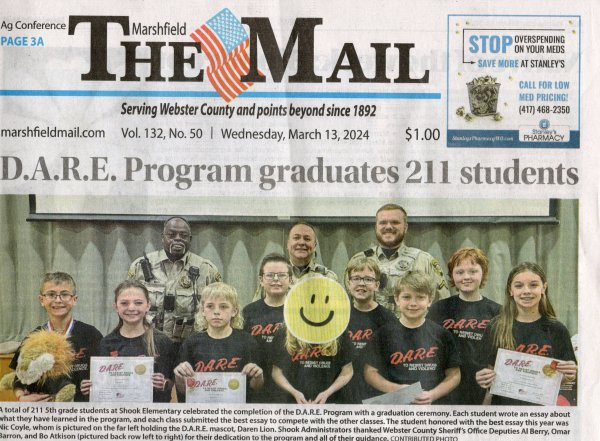

 This book is one of two that I bought by this local author in
This book is one of two that I bought by this local author in